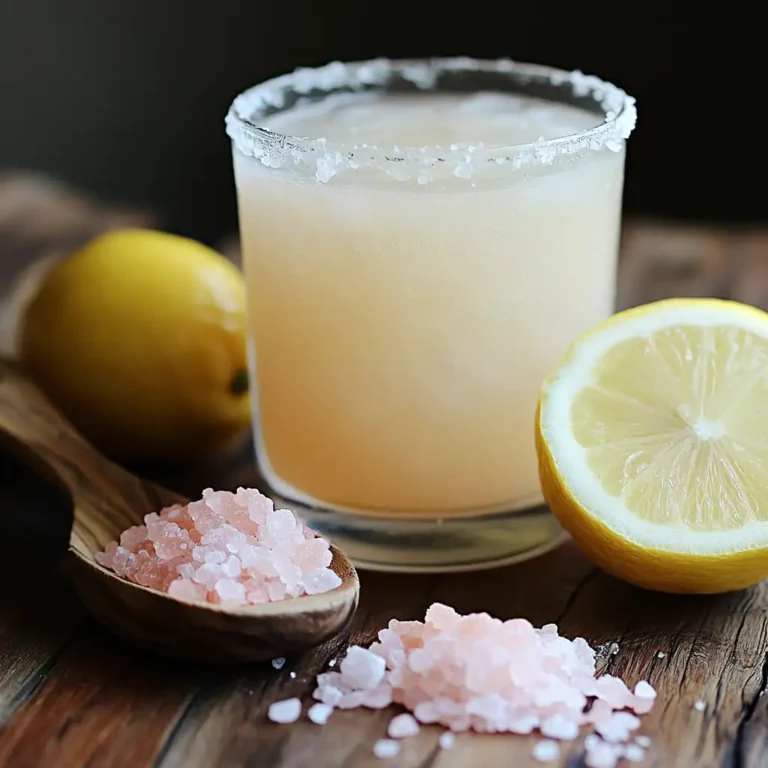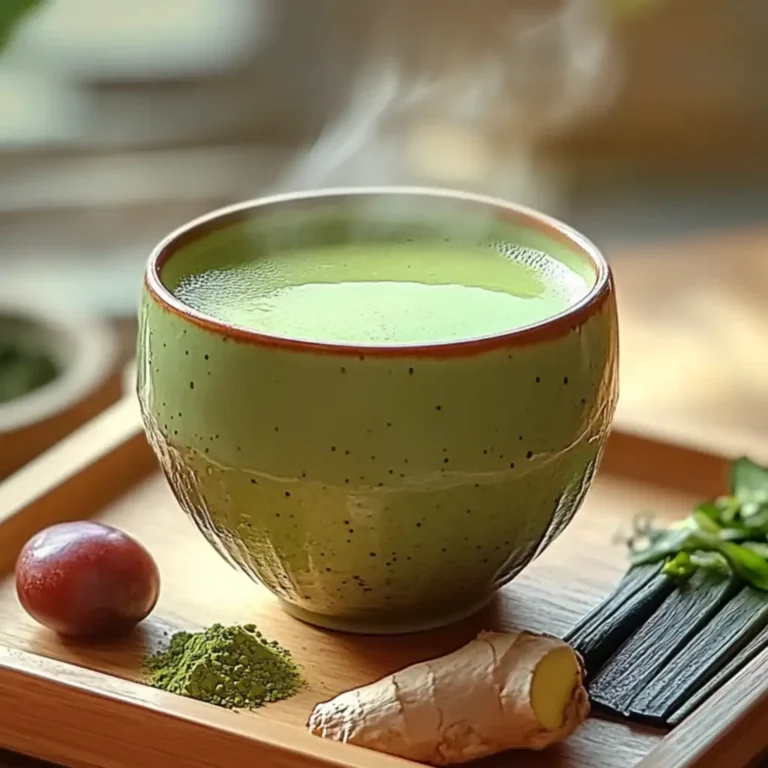Japanese Mounjaro Recipe – Traditional Secrets for Healthy Living
When searching for a natural way to support wellness, few things are as fascinating as the Japanese Mounjaro recipe. Rooted deeply in Japanese culinary traditions, this recipe combines simple ingredients into a powerful dish known for supporting metabolism, digestion, and energy. In this article, you will discover the history, ingredients, preparation methods, and the modern appeal of the Japanese Mounjaro recipe. By the end, you’ll know exactly how to make this traditional treasure part of your everyday routine.
Quick Takeaway
- Learn Traditional Wisdom: Discover how the Japanese Mounjaro recipe uses natural, time-tested ingredients to support digestion, energy, and longevity.
- Master Simple Preparation: Follow easy steps to create an authentic, balanced meal using seaweed, fermented vegetables, whole grains, and clean proteins.
- Adopt Healthy Habits: See how integrating Japanese Mounjaro meals into your routine can naturally help with weight management and overall wellness.
Table of Contents
PART 1: Introduction to Japanese Mounjaro Recipe
Understanding the origins of Japanese Mounjaro
The Japanese Mounjaro recipe evolved from ancient dietary practices focused on wellness through simple, local ingredients. Seaweed, fermented vegetables, and fresh seafood were staples in daily meals. Recipes like the Homemade Mounjaro Recipe reflect the commitment to balance and nourishment that guided traditional Japanese cooking.
Communities carefully selected foods to maximize nutrition and support longevity. Meals often combined fiber-rich grains with probiotics from fermented foods, creating dishes that strengthened digestion and immune function. This approach, emphasizing natural, seasonal ingredients, remains at the heart of the Mounjaro method even today.
Why Japanese Mounjaro recipes are gaining popularity
As people move away from processed diets, the appeal of dishes like the Japanese Mounjaro continues to rise. The emphasis on simple, whole foods aligns perfectly with modern health goals. The idea behind meals such as the Natural Mounjaro Drink highlights the growing interest in natural nutrition without synthetic additives. By returning to these traditional practices, many are finding better health and balance.
PART 2: Core Ingredients in a Japanese Mounjaro Recipe
Essential ingredients for authentic taste
An authentic Japanese Mounjaro recipe relies on a few core ingredients that deliver both flavor and nutrition. Seaweed varieties like wakame bring minerals essential for thyroid health. Fermented foods, such as miso and pickled vegetables, add probiotics that aid digestion. The way ingredients are paired mirrors methods used in meals like easy homemade Mounjaro recipes, ensuring every bite supports wellness.
Grains like brown rice or millet form the base, offering slow-burning energy. Clean proteins, including tofu and grilled fish, complete the meal without overwhelming it. Each ingredient is carefully chosen to maintain a perfect balance of taste and health benefits.
Nutritional benefits of Japanese Mounjaro components
Each part of the Japanese Mounjaro recipe serves a purpose. Seaweed’s iodine content supports metabolism, while brown rice’s fiber regulates digestion. Including green tea, a traditional staple seen in How to Make Iced Matcha Latte, adds antioxidants that protect cells. Together, these ingredients create a meal designed for complete, natural nourishment.
PART 3: How to Make the Best Japanese Mounjaro Recipe at Home
Step-by-step traditional preparation method
Creating a Japanese Mounjaro recipe at home begins with selecting high-quality, natural ingredients. Start by soaking seaweed and preparing brown rice or millet. Grill fresh tofu or white fish lightly seasoned with miso. Assemble the dish by layering grains, proteins, fermented vegetables, and softened seaweed.
Simple recipes like the Natural Mounjaro Recipe demonstrate how minimal preparation can yield powerful nutritional benefits. Keeping the process straightforward preserves the integrity of the ingredients and delivers the best health results.
Tips for maintaining authentic flavors
To maintain authentic flavor, always use traditional, unprocessed ingredients. Avoid shortcuts like instant seasoning packs. Fermenting vegetables at home, a method seen in other traditional Mounjaro diet options, ensures a richer, deeper flavor. Authenticity in ingredients guarantees the nutritional and health-promoting qualities the Japanese Mounjaro recipe is known for.
PART 4: Health Benefits of Japanese Mounjaro Recipes
How Japanese Mounjaro supports metabolism and digestion
The Japanese Mounjaro recipe supports metabolism and digestion through its natural blend of ingredients. Seaweed delivers iodine for thyroid function, brown rice provides fiber for gut health, and fermented vegetables introduce beneficial bacteria to aid digestion.
Drinks like the refreshing natural Mounjaro beverage further complement meals by enhancing hydration and nutrient absorption. The recipe’s combination of elements creates a sustainable foundation for long-term digestive health.
Why it’s perfect for natural weight management
Choosing a Japanese Mounjaro recipe helps maintain a healthy weight without strict dieting. High fiber content from whole grains, lean proteins from tofu and fish, and the satiety from fermented foods work together to control appetite.
Inspired dishes, such as those featured among the best Mounjaro recipes for balance, show how this tradition fits easily into modern weight management strategies. Eating balanced, natural foods keeps energy stable and supports healthy living without deprivation.
PART 5: Variations of Japanese Mounjaro Recipes You Should Try
Regional twists and flavor innovations
The Japanese Mounjaro recipe easily adapts to different regions and tastes. In colder climates, recipes often include root vegetables like sweet potatoes or burdock root, adding heartiness to the dish. Coastal areas favor seafood-rich versions that increase omega-3 intake while staying true to traditional preparation.
Adaptations such as the Brazilian Mounjaro Recipe with Apple Cider Vinegar show how global influences can blend with the Japanese approach. These versions maintain the focus on clean, nutrient-dense ingredients while introducing exciting new flavors.
Modern adaptations for busy lifestyles
Busy modern lives demand quicker meal solutions without sacrificing health benefits. Many people now use pre-cooked brown rice, pre-washed seaweed, and pre-fermented vegetables to save time. Despite these shortcuts, the essence of the Japanese Mounjaro recipe remains intact.
Adding functional drinks, like those based on Natural Mounjaro ingredients, makes meals even more convenient while preserving their traditional roots. These modern updates allow anyone to enjoy the benefits of Japanese Mounjaro without spending hours in the kitchen.
PART 6: Common Mistakes to Avoid When Preparing Japanese Mounjaro
Ingredient swaps that ruin authenticity
One of the biggest mistakes when making a Japanese Mounjaro recipe is substituting traditional ingredients with processed alternatives. Using instant noodles instead of brown rice or canned vegetables instead of freshly fermented ones weakens the recipe’s natural health benefits. Authenticity lies in selecting ingredients that have been staples in Japanese kitchens for centuries.
For example, following methods similar to those used in Homemade Mounjaro Recipe preparations ensures that every component contributes to a balanced, nutrient-rich meal. Swapping authentic elements for convenience reduces the true nutritional value.
Cooking techniques to stay true to tradition
Overcooking vegetables or proteins can strip away essential nutrients and change the intended flavors. The Japanese Mounjaro recipe relies on gentle cooking methods like steaming, light grilling, or simple fermentation to preserve the natural qualities of the food.
Exploring ideas like those found in Mounjaro Recipes made for health can help maintain the right balance. Staying close to traditional techniques keeps the dish vibrant, nutritious, and aligned with its original healing purpose.
FAQs About Japanese Mounjaro recipe
What is a Japanese Mounjaro recipe?
What ingredients are used in a traditional Japanese Mounjaro recipe?
Is the Japanese Mounjaro recipe good for weight loss?
How often should you consume Japanese Mounjaro recipes for best results?
PART 8: Serving and Storing Japanese Mounjaro Recipes Properly
Best ways to serve for maximum freshness
Serving a Japanese Mounjaro recipe fresh is key to preserving its flavor and health benefits. After preparing the meal, assemble all ingredients immediately without letting them sit too long. Freshly grilled fish or tofu, crisp fermented vegetables, and warm grains come together best when served right away.
Dishes inspired by natural Mounjaro meal ideas often suggest serving with a light broth or green tea. This pairing enhances digestion and complements the natural flavors of the meal without overwhelming them.
How to store leftovers without losing flavor
If you have leftovers, store components separately whenever possible. Keep grains, vegetables, and proteins in different airtight containers to maintain texture and freshness. Refrigerate them promptly and consume within two days to enjoy optimal taste and nutritional value.
Using tips from recipes like the best Mounjaro-inspired dishes helps maintain authenticity even when reheating. Reheat grains gently with a little water to prevent drying, and add fermented vegetables only at serving time to preserve probiotics. Proper storage ensures that even leftovers continue to support your health goals.
Conclusion
The Japanese Mounjaro recipe stands as a timeless example of how simple, natural ingredients can support strong health and vibrant living. With its focus on seaweed, fermented vegetables, whole grains, and clean proteins, this traditional dish offers more than nourishment—it provides a pathway to lasting wellness.
Today’s renewed interest in natural eating makes the Japanese Mounjaro approach more valuable than ever. By preparing meals that align with the body’s needs, you tap into a tradition proven to promote digestion, metabolism, energy, and longevity. Whether you’re new to traditional Japanese cooking or looking for ways to refresh your diet naturally, integrating Mounjaro recipes into your weekly routine is a smart and satisfying choice.
For more inspiration and updates, you can follow WeCookRecipes on Pinterest and Facebook, where fresh ideas and traditional recipes are shared regularly.
Explore variations, respect authentic ingredients, and enjoy the many health benefits rooted in this simple yet powerful culinary tradition. With each meal, you continue a legacy built on balance, nutrition, and genuine well-being.






